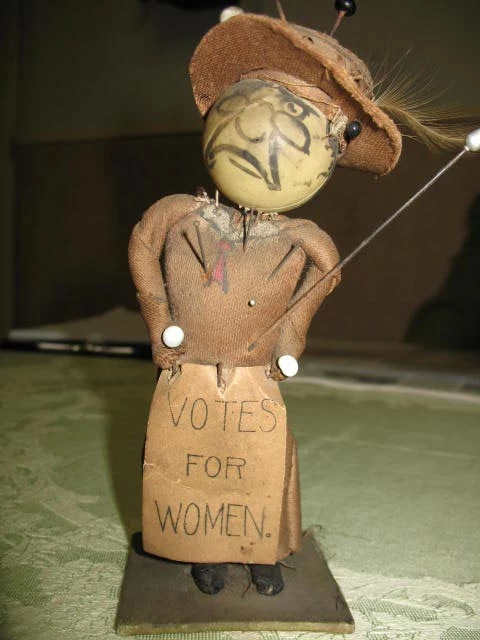Revolting women
The battle for the right to vote
This anti-suffragette 'voodoo' doll is an unflattering and grotesque caricature of a suffrage campaigner. The anti-suffrage movement used images such as this in cartoons and posters to ridicule and insult women who wanted the right to vote.
Like many people around the world, women in Britain had to fight for the right to vote. Today we take this privilege for granted but it was not always the case.
During the late 19th and early 20th centuries the women's suffrage movement fought for the right for women to vote in General Elections.
These mainly female campaigners were known as Suffragettes or Suffragists. There have been many books written about them. What has received less attention however is the existence of an anti-suffrage movement, which sought to prevent women from getting the vote.
Objectors to votes for women tried to convince people that the female mind was unable to understand politics. When they failed in this they resorted to tactics such as sending this 'voodoo doll'. Some of them went as far as attacking or spitting on women activists in the streets.
The doll is an unflattering and grotesque caricature of a suffrage campaigner. The anti-suffrage movement used images such as this in cartoons and posters. They ridiculed and insulted women who wanted the right to vote.
These views were an extension of the idea that 'a woman's place is in the home'. Women were frequently shown as needing protection from the 'man's world' of work and politics. Their role was to look after their husbands, homes and children.
During the First World War the role of women in society changed. While men were away fighting, women took on many of their jobs. They were able to disprove the stereotype of being the weaker sex and prove their equality to men. This gave them another strong argument for having the vote.
Despite the strength of opposition shown in this doll, hundreds of thousands of women in Wales were eventually empowered to express their political views at the ballot box. It is due to the commitment of the suffrage movement that every British adult has the right to use their vote in elections.
View this item in 3D on the People's Collection Wales
